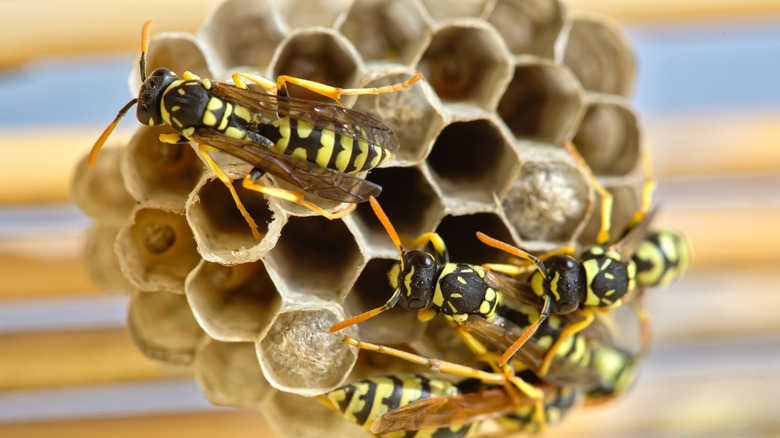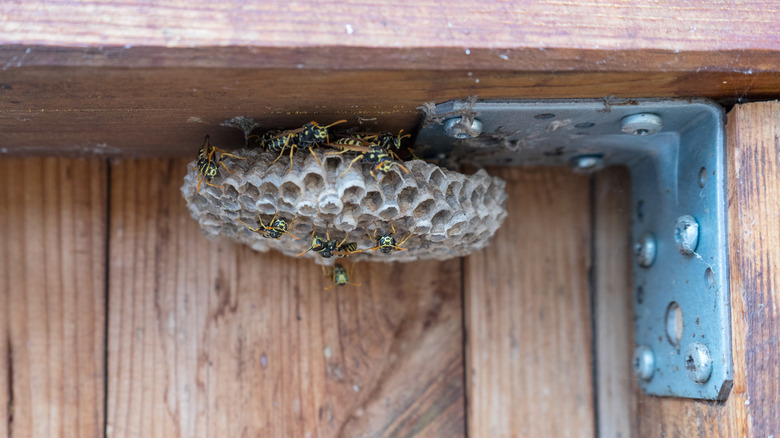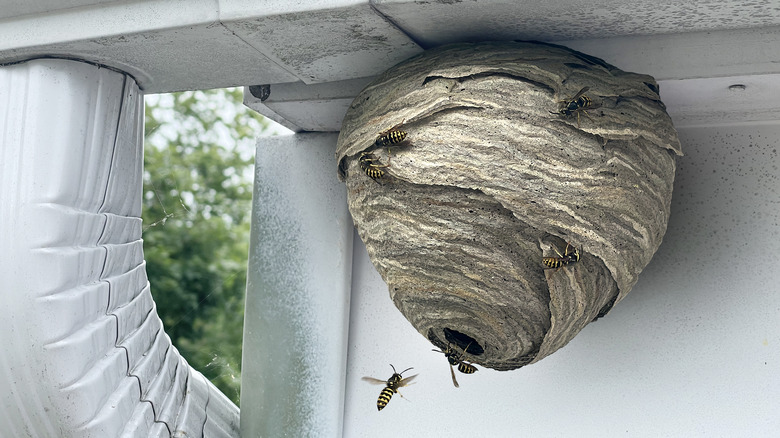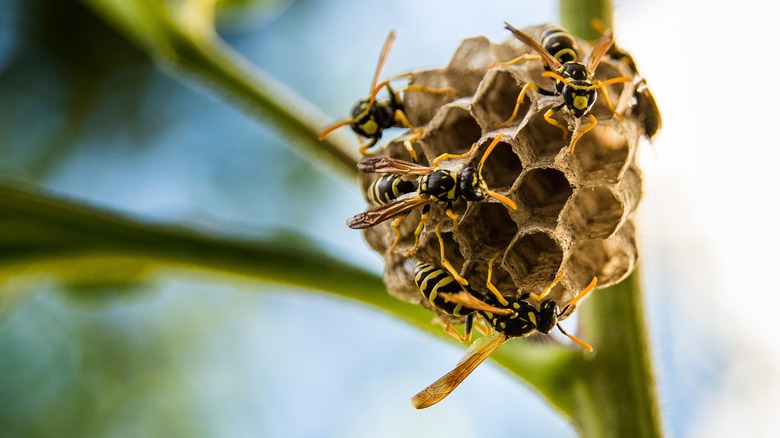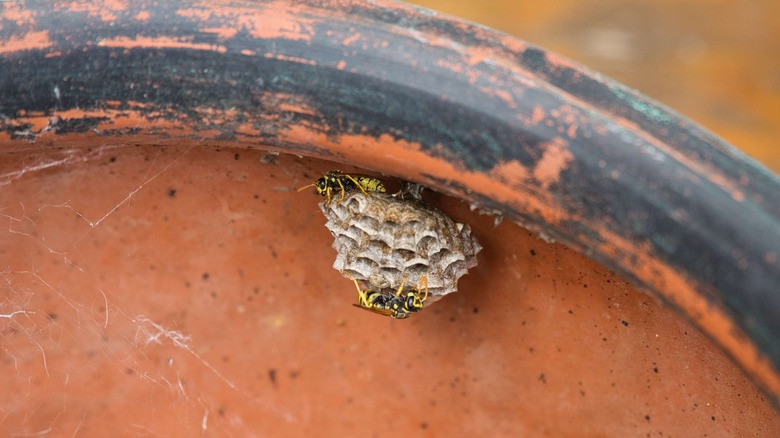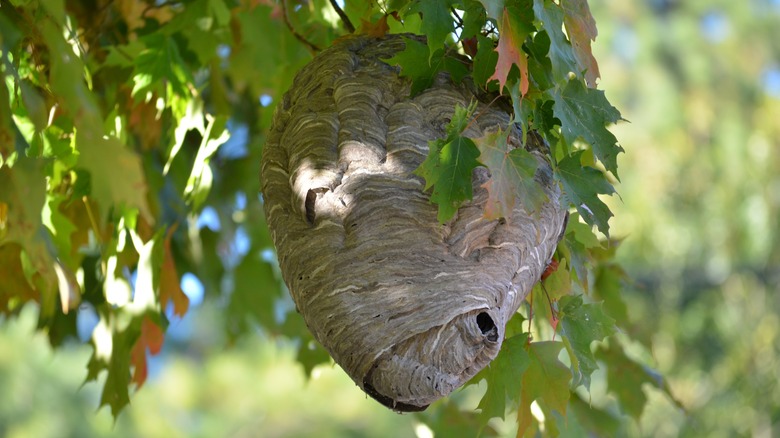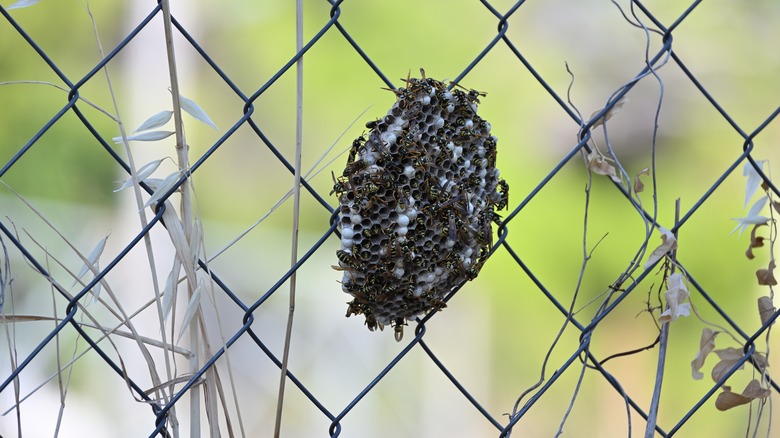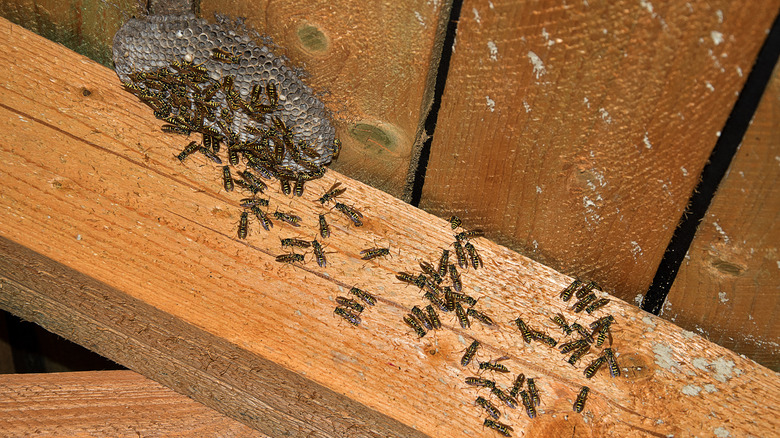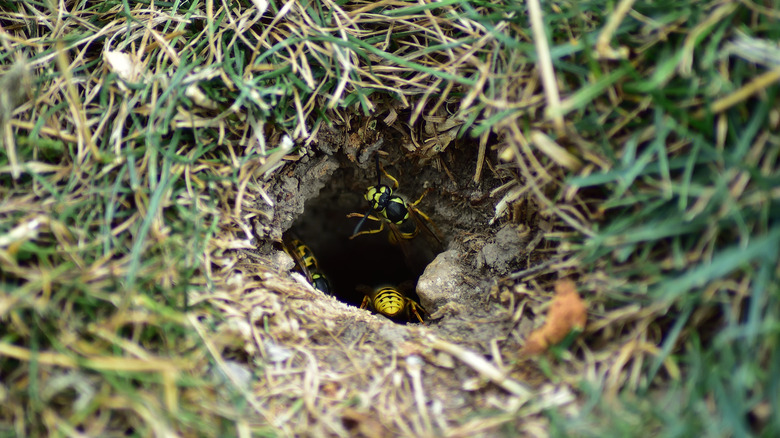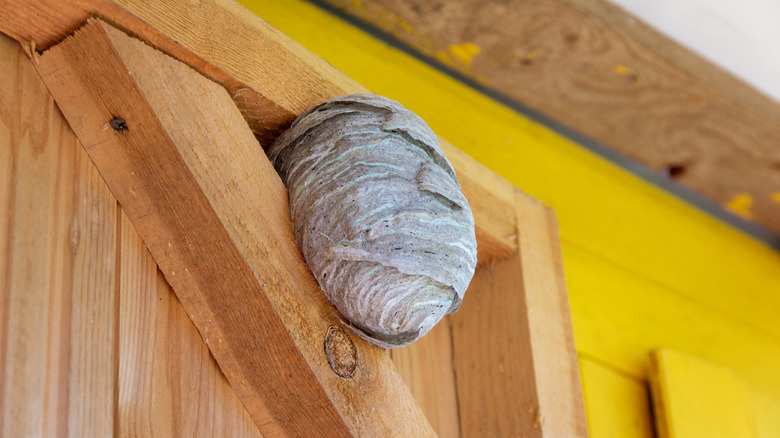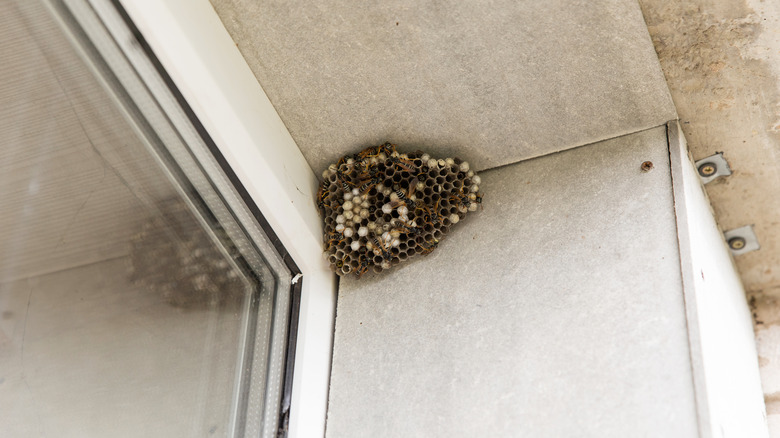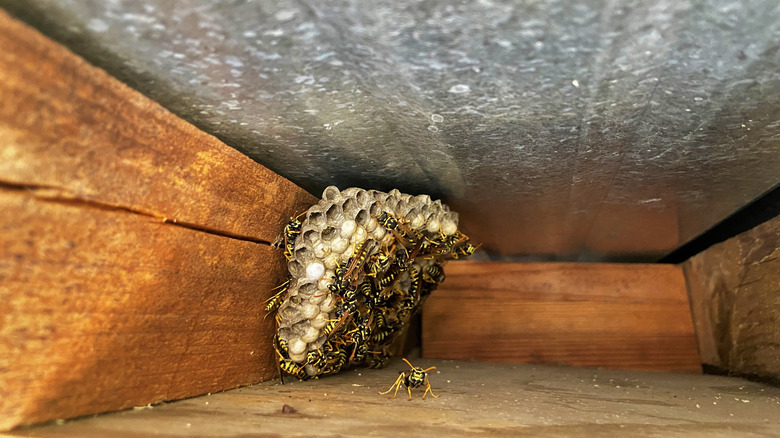11 Sneaky Spots Wasps Are Building Their Nests Around Your Home
Wasps — including yellowjackets, hornets, and paper wasps– nesting around homes can really turn into a nuisance during the summer months when you're looking forward to outdoor cookouts with friends or filling up the kiddie pool for some playtime with the family. Because those nests are built by social wasps, meaning they live in colonies, there can literally be swarms of them flying around if a nest gets disturbed accidentally. Some of those nesting sites can be hidden in sneaky locations that you wouldn't normally notice, too.
Since each type of wasp nests differently, you literally have to look high and low to find all of these potentially problematic pests hiding on your property. In fact, they can be attracted to your child's playhouse as easily as they are to the area under your patio overhang. Here are 11 spots to check if you're concerned about finding even the sneakiest wasps making an unwelcome home all around your house and yard.
Check under outdoor furniture
Wasps start building their nests in the late spring and continue working on them all summer long. So, while you're not using your picnic table or other outdoor furniture regularly yet as the temperature warms up, paper wasps can already be busy at work under any type of furniture that offers shelter from the weather. If you're noticing wasps flying under a table, chair, or bench, there's probably a good reason for that. Carefully turn the furniture over to check it for the familiar hexagon-shaped cells stuck together to create a paper wasp nest.
Nests may be under eaves and overhangs
Eaves and overhangs of homes, patios, and gazebos are some of the most common sheltered spots for hornets and paper wasps to nest. They'll utilize any covered area like this, so before you know it, they can quite easily sneak a colony under the eaves on the far side of your garage or the overhang of an upstairs balcony you don't utilize frequently. Walking around the entire perimeter of your home several times during the late spring and summer months will help you spot budding nests before they grow into bigger problems.
Wasps can even nest on plants
While you might notice them under eaves and overhangs more often, wasps will build nests on plant stems, too, if they feel like they afford enough protection from both the elements and predators (like birds that can help you solve your wasp problem.) Gardeners sometimes don't notice these insects hiding in their containers and landscaping until they're disturbed and deliver a painful sting or two. It's wise to watch for wasps coming and going from your plants and approach those areas cautiously, knowing that they may have taken up housekeeping there.
Look in plant pots for wasp nests
Many homeowners have some perfectly good empty earthenware pots out on the patio waiting to hold a plant haul. If they're being stored in a sheltered area, wasps can easily decide they're a great spot to build a home base. This can happen in the springtime before you even have a chance to visit the nursery for greenery or flowers to fill those containers. Take care when handling pots that have been sitting awhile to make sure you don't inadvertently disturb a wasp nest sneakily hidden inside.
Check trees and shrubs
Hornets' nests wrapped in the paper-like material the insects produce are often found in trees, and they can be camouflaged in areas where you plan to enjoy outdoor activities. You may also notice paper wasps nesting in bushes around your home. If either of these types of wasps feel threatened, they will swarm and sting to protect their nests. Taking steps to safely remove wasps nests in these areas is a good idea as soon as you notice them, since they'll just grow bigger over the summer.
The insects may also nest on fences
There are occasions when you'll find paper wasp nests in locations that really surprise you — right out in the open on chain link fencing or on strands of barbed wire, for instance. Most of the time, however, you'll find the sneaky insects hiding inside a chain link fence cap or an exposed pole opening for a bit more protection. If you have a fence of any kind around your property, be sure to check it for potential hiding places if you're noticing wasps buzzing around more than usual.
Don't forget attics
Small cracks, even those as narrow as 3/16-inch wide, are big enough for wasps to shimmy through. Once inside, they'll quickly find a spot to start a nest that will grow exponentially over the summer months. Keep an eye out along your roofline for wasps coming and going. If you spot them in that area, it might be time to investigate the attic of your home to see if a nest is brewing. If you don't feel safe entering your attic looking for stinging insects like these, consider hiring a pest control pro to assist you.
Wasps also nest in the ground
There can be several reasons yellowjackets are so attracted to your yard. They like flowering plants and sweet scents, for instance, but they can also make their nests in the ground using abandoned rabbit or rodent burrows. If you see wasps entering and leaving a ground nest, they could be aggressive yellowjackets, so you need to approach with extreme caution. However, digger wasps and cicada killer wasps (even though they're quite large and sometimes confused with murder hornets), can also nest in the ground and rarely sting humans.
On and in sheds and outbuildings
If you have a storage shed or guest cottage out back, don't forget that there are eaves, overhangs, and sheltered spots where hornets and paper wasps will readily build nests there just like they do around your residence. Consider children's playhouses and doghouses to be outbuildings, too, because wasps won't discriminate when it comes to nesting around or inside those domains. It takes some diligence to find all their hiding places, but it's worth the effort to protect your guests, family, and pets from these painful stinging insects.
Check around windows
When you're walking around your home and any outbuildings on your property checking all the usual spots for wasp nests, don't forget to examine the areas around windows, too. Paper wasps usually look for nesting spots that will offer protection from wind and rain, so a recessed window can provide even more shelter for them than a standard eave. And remember, if you like to open your windows when the weather is nice, wasps can squeeze through small openings, so it's a really good idea to keep them at bay in these areas.
Under roofs and in walls
This may be the sneakiest spot of all when it comes to wasps building nests. First of all, it's pretty hard to see into roof enclosures and inside walls. Yellowjackets are known to nest in this way when they're not burrowing underground, so keep an eye out for them flying in and out of small cracks in structures on your property. If you see wasps buzzing in and out of an area like this, you may need to hire a pest control professional to prevent them from entering your home.
